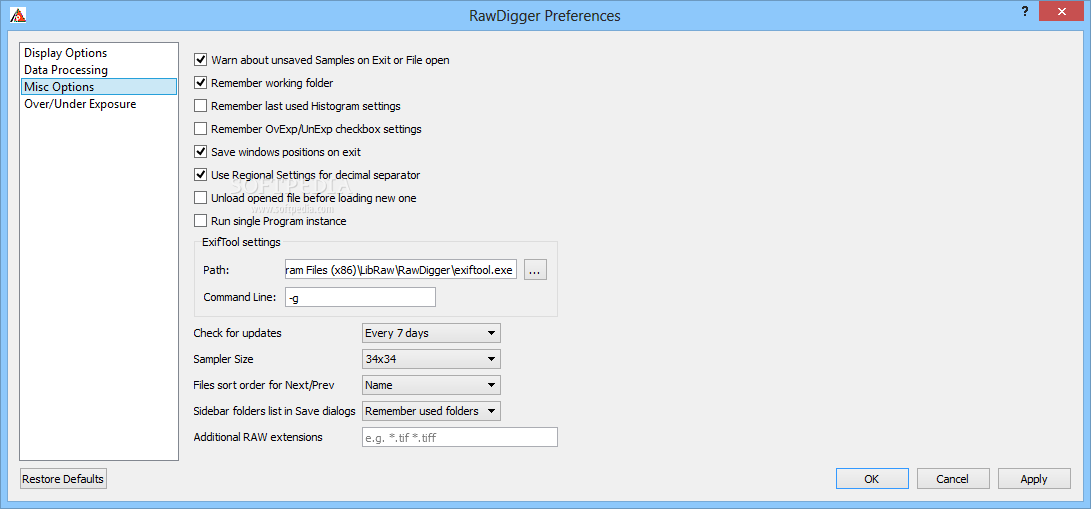

When a song is downloaded for offline listening, you’ll see a tiny device icon next to its name in the list.
#Free rawdigger download#
Apple Music, for instance, lets you download songs for offline listening, which takes up to ten megabytes of on-device storage per song or more, depending on the song length and audio quality. As a result, you are able to consume cached content without an Internet connection. Some apps that manage online content allow you to mark items for offline use. As much as I searched, I couldn’t find cache-cleaning switches in such apps like Facebook, Facebook Messenger, WhatsApp, Viber, Dropbox and OneDrive. Sadly, too few apps allow users to flush their caches with a tap of a button. Instagram, for example, is one app that can be quite a storage hog and yet it lacks a similar cache-cleaning solution. Slack, for example, provides the Reset Cache on Next Launch toggle in Settings → Slack even though that option is nowhere to be found within the app itself. I also recommend checking out your frequently used apps in the stock Settings app to see if developers put a cache-cleaning option in there. I freed up two megabytes of storage space wasted on cached metadata content by tapping the Clear All Metadata button in Infuse, FireCore’s versatile media player for iOS. To see if your favorite app supports this feature, launch it and take a closer look at its built-in settings. Tweetbot, for example, has a Reset Account Cache option for each account in the settings. Some apps include a user-facing option to delete their own caches. To force the app to recalculate the correct iOS storage usage, de-select and re-select the “Open iTunes when this iPhone is connected” option available in the Options section of iTunes’ Summary pane. Your iOS device, on the other hand, reports these items as actual songs, videos and photos: that’s why storage amounts for Music or Videos seen on the device in Settings → General → iPhone Storage might differ from what you see reported in iTunes.īefore we begin, let me just bring to your attention the fact that iTunes has been found to sometimes erroneously report the size of ‘Other’ storage. Now, iTunes categorizes cached music, videos and photos as ‘Other’ storage.
#Free rawdigger tv#
Video: Movies, music videos and TV shows.

Audio: Songs, audio podcasts, audiobooks, voice memos, music memos and ringtones.Cached files created when streaming or viewing content like music, videos, and photosĮqually important to making the most from this tutorial, here’s what iTunes reports as separate storage items rather than fold them under the ‘Other’ category:.The ‘Other’ iOS storage is comprised of the following items: To check how much device storage is lost to the ‘Other’ category, hook up your device to a computer with the included USB cable, launch iTunes and select the device.Īt the bottom of the Summary pane there is a bar that shows how much storage your iOS content uses, divided by content type. Wait for iTunes to scan your device’s storage and then hover your mouse over the ‘Other’ category to find more information. IOS doesn’t break down the ‘Other’ storage category, but iTunes does. It’s actually fairly easy to recover your usable storage lost to ‘Other’ space hogs by specifically targeting certain items. In this post, we’ll lay out a few different techniques to decrease ‘Other’ storage on your iPhone or iPad. The good news is, your proactiveness in dealing with this issue should pay off. And when that happens, a large amount of storage will be lumped into the ‘Other’ category. That said, software can (and will) break and so these files may not get cleaned out properly. This all happens automatically and without any intervention on part of the user. ‘Other’ storage is a combination of system settings, caches and various files that iOS stores temporarily to speed up system performance and minimize your dependency on network connectivity. The infamous ‘Other’ storage section displayed in iTunes after connecting an iPhone, iPod touch or iPad to a computer is definitely one of the pain points for users mainly because it keeps increasing on its own.


 0 kommentar(er)
0 kommentar(er)
